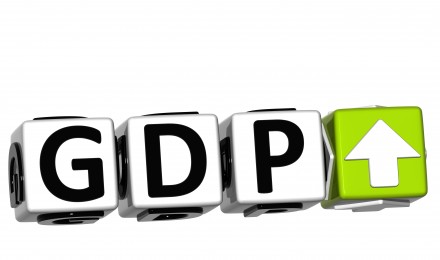Keywords: Jobless Claims, Department of Labor, Recession, Recovery, Unemployment, Financial Crisis, Economic Activity
The Department of Labor released its figures for initial jobless claims for the week ending February 18 and they are unchanged from the previous week. The data measures how many people filed for unemployment insurance in a given week, so it is a good indicator for the state of the labor market. The week showed the lowest number of jobless claims since March 2008.
Initial Claims: The number of initial claims was 351,000, roughly the same as the amount for the week ending February 11. The four-week average showed an improvement of 7,000 fewer jobless claims for an average of 359,000. This was the 11th time in 12 weeks that the initial jobless claims number has shown improvement and follows the labor market’s strong performance in January. The four-week average is 20,000 claims lower than the previous month’s – a sign of substantial progress.
Insured Unemployment: The rate of unemployment for insured workers was 3,392,000 for the week ending February 11, a decrease of 52,000 from the previous week. The insured unemployment rate was 2.7% for the week ending February 11, which was unchanged from the previous week. For the same week in 2011 the rate was 3.7% and the volume was 4,587,740. January’s unemployment rate was 8.3%, the lowest rate in three years, and employers added 243,000 jobs, the highest number in nine months.
Breakdown by State: The states with the largest increases of initial jobless claims for the week of February 11 where Massachusetts, Nebraska, Hawaii, and Rhode Island. The states that showed the largest reductions of jobless claims were California, Pennsylvania, New York, North Carolina, and South Carolina.
Why Consumers Care: The number of initial jobless claims is a measure of how many people lost their jobs in a given time period, and therefore describes the health of the job market as well as the economy generally. It can also predict future economic activity. When people have jobs, they tend to spend more money and consumer spending helps boost the economy. So a stronger job market can lead to a more robust economy. Investors make decisions about purchasing stocks and bonds based on how the economy is doing and how they think it will do in the future.
Keywords: Jobless Claims, Department of Labor, Recession, Recovery, Unemployment, Financial Crisis, Economic Activity
The Department of Labor released its figures for initial jobless claims for the week ending February 18 and they are unchanged from the previous week. The data measures how many people filed for unemployment insurance in a given week, so it is a good indicator for the state of the labor market. The week showed the lowest number of jobless claims since March 2008.
Initial Claims: The number of initial claims was 351,000, roughly the same as the amount for the week ending February 11. The four-week average showed an improvement of 7,000 fewer jobless claims for an average of 359,000. This was the 11th time in 12 weeks that the initial jobless claims number has shown improvement and follows the labor market’s strong performance in January. The four-week average is 20,000 claims lower than the previous month’s – a sign of substantial progress.
Insured Unemployment: The rate of unemployment for insured workers was 3,392,000 for the week ending February 11, a decrease of 52,000 from the previous week. The insured unemployment rate was 2.7% for the week ending February 11, which was unchanged from the previous week. For the same week in 2011 the rate was 3.7% and the volume was 4,587,740. January’s unemployment rate was 8.3%, the lowest rate in three years, and employers added 243,000 jobs, the highest number in nine months.
Breakdown by State: The states with the largest increases of initial jobless claims for the week of February 11 where Massachusetts, Nebraska, Hawaii, and Rhode Island. The states that showed the largest reductions of jobless claims were California, Pennsylvania, New York, North Carolina, and South Carolina.
Why Consumers Care: The number of initial jobless claims is a measure of how many people lost their jobs in a given time period, and therefore describes the health of the job market as well as the economy generally. It can also predict future economic activity. When people have jobs, they tend to spend more money and consumer spending helps boost the economy. So a stronger job market can lead to a more robust economy. Investors make decisions about purchasing stocks and bonds based on how the economy is doing and how they think it will do in the future.







